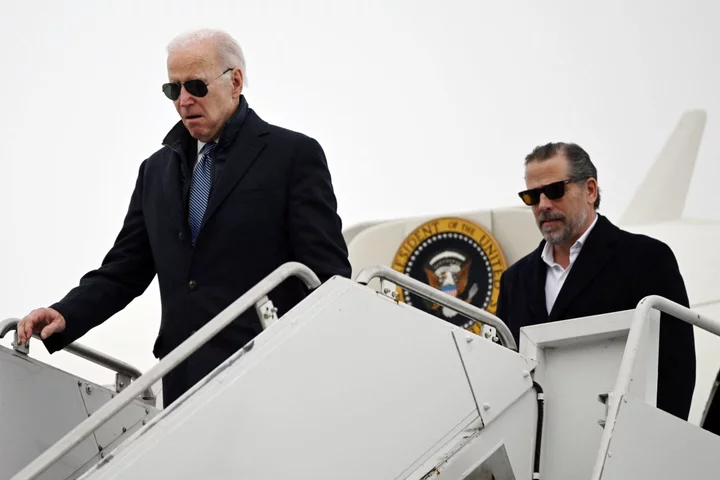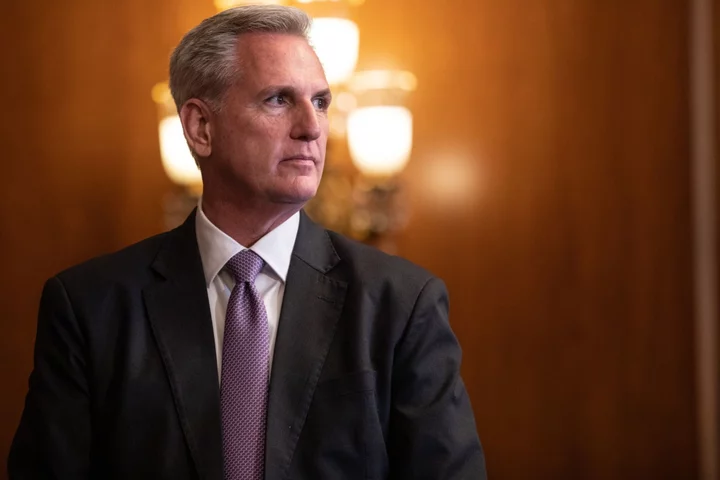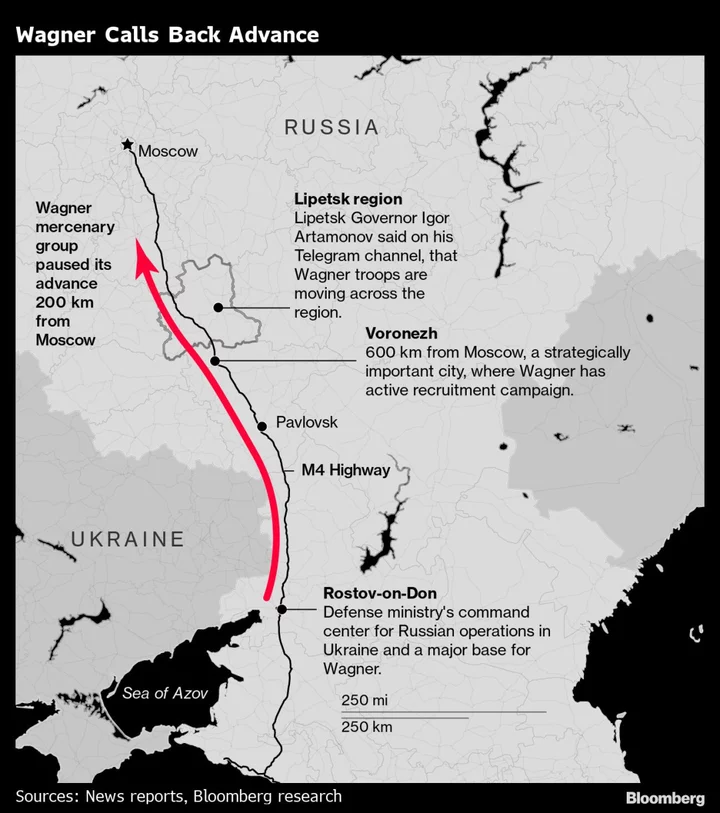Sign up for the Green Daily newsletter for comprehensive coverage of the climate summit right in your inbox.
With tens of thousands of delegates planning to attend this year’s UN climate summit in Dubai, there’s expected to be a flood of new pledges, projects and initiatives announced. It’ll be easy to lose focus on the most important task at hand: Nearly 200 countries have 13 days to reach a new, unanimous agreement on how to tackle climate change.
To help cut through the noise, BloombergNEF has identified 10 areas where governments need to make headway at COP28 in order to take a meaningful step toward the goals of the Paris Agreement.
Each area is scored out of 10 based on expected level of progress in Dubai and assigned a weighting based on importance and urgency. Overall, COP28 is expected to score just 3.9 out of 10, marking a slight increase (0.3 points) since BloombergNEF’s report published on Nov. 2.
Top of the agenda this year will be the first formal “stocktake” on global progress toward the Paris targets. It’s pretty much a fait accompli that the technical assessment will make for depressing reading, as parties’ current targets are most likely not enough to limit the increase in global average temperatures to 1.5C above pre-industrial levels by end of the century. If countries achieve their existing climate plans, warming this century could be as much as 2.8C, based on the latest UN analysis. So the pressure is on for parties in Dubai to agree on bold, specific recommendations that drive governments to ratchet up their climate commitments by 2025. If history is anything to go by, the recommendations will probably be more tentative than bold, meaning BloombergNEF scores this part of the process just 1 out of 10.
Read More: What Is COP28 and Why Is It Important?
At the other extreme, the most likely area to yield progress in Dubai is a package of commitments to further the energy transition. This is expected to include a pledge to triple global renewables capacity by 2030, though it could be watered down, as seen at the Group-of-20 summit. With over 60 countries now pushing for this target to be included in the COP28 decision, the score for this metric has risen to 8 out of 10 — two points more than in BloombergNEF’s Nov. 2 report.
In practice, tripling renewables by 2030 will be hard but achievable based on a recent BloombergNEF report. Meeting such a target would require a doubling of the rate of renewables investment to an average of $1.18 trillion per year through 2030, compared with $564 billion in 2022. It would also entail nearly three times as much power-grid investment in 2030 as was spent in 2022, and deploying 16.1 times as many batteries by the end of the decade as were installed at the end of last year.
The most contentious topic at COP28 will likely be finance. Yet BNEF considers it relatively likely — 7 out of 10 — that developed nations will make good on their 2009 pledge to annually provide $100 billion in climate finance to developing economies. They may have missed the original 2020 deadline, but data from the Organization for Economic Cooperation and Development showed that developed countries had provided $89.6 billion in 2021 and that the $100 billion goal looks likely to have been met last year. Delivering on this commitment should start to rebuild trust between developed and developing economies. Ultimately that trust could convince some burgeoning emitters to increase their climate targets.
One of the areas where parties are expected to make only modest progress in Dubai is the new global carbon offset mechanism known as “Article 6.4.” Article 6 of the Paris Agreement covers how parties can cooperate to achieve their climate commitments and is the only part of the pact that directly engages with the private sector. In particular, Article 6.4 establishes the market mechanism that enables governments and companies to trade carbon credits. Unlike voluntary CO2 markets, Article 6.4 will be overseen by a UN supervisory body comprising parties to the Paris Agreement and is meant to be more robust in terms of delivering actual environmental benefits.
It was a close call at COP27 as to whether negotiators would reach any form of agreement on Article 6.4. However, the eventual deal deferred many issues to COP28, and the supervisory body has made little headway in its meetings this year. As a result, there is a 3-out-of-10 chance that countries can resolve all the outstanding issues in Dubai for an environmentally robust mechanism to be ready to launch in early 2024.
To give an idea of how the talks are going, BloombergNEF will update the scores for the 10 areas throughout COP28 when there are significant developments. Then once the summit is over, we will assess to what extent parties were able to achieve meaningful progress, or whether it ends up being another damp squib as seen at climate talks in Sharm el-Sheikh last year.
Read more of BloombergNEF’s analysis on this year’s climate summit via the COP28 theme page.









